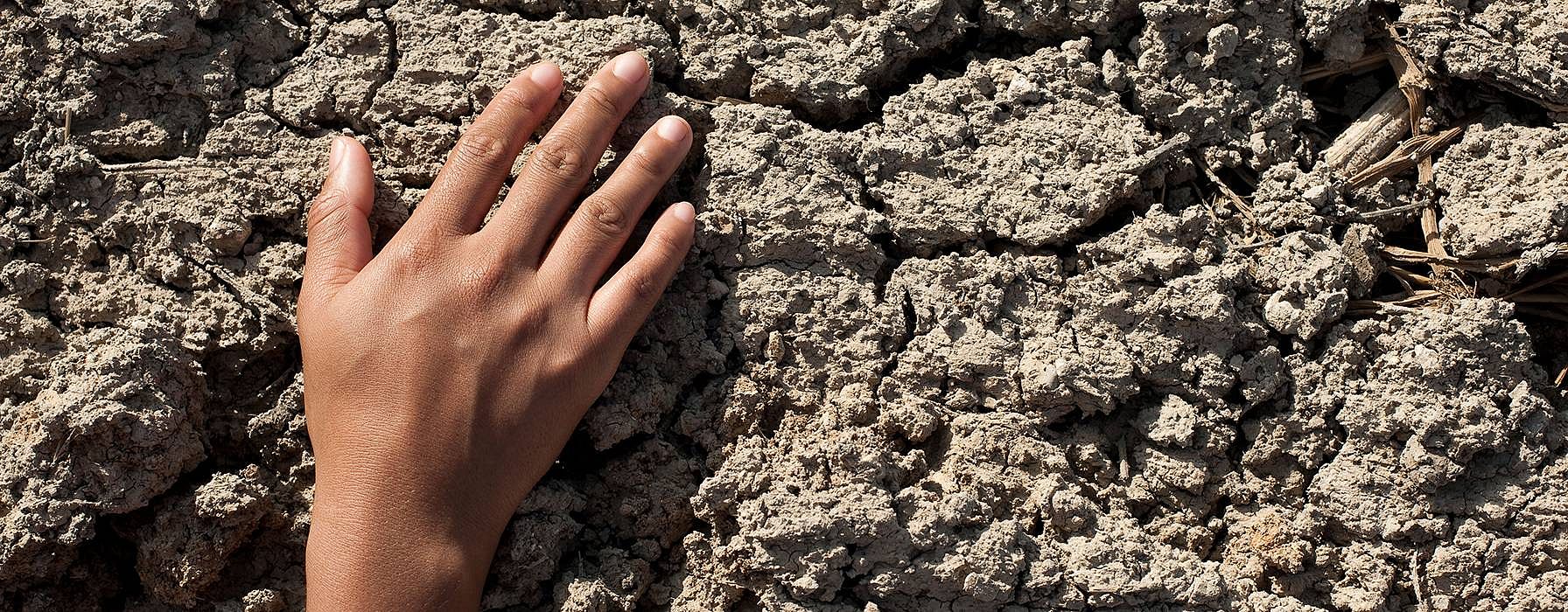The Microbiome – What is It?
Research is growing on the relationship between the microbiome and human beings – also at Weleda
Countless microscopic organisms populate our Earth – including our bodies. What role do they play in our health and wellbeing? Dr. Johann Röhrl, Senior Manager in Preclinical Research at Weleda, explains the importance of the microbiome in this interview.
An invisible world – in and around us
There are far more microorganisms living on our skin than there are people on Earth: about 100 billion. A trillion tiny creatures are crucial for our gut health. Our mucous membranes have also been colonized by organisms invisible to our eyes.
Microbes are a natural and essential part of the world around us – in the water, in the air, in and on other organisms, and in the soil. Healthy soil is home to an abundance of microorganisms. A single gram of soil contains over a billion cells with more than a thousand microbial species.
Microbiome and microbiota – what are they?
“Micro” and “bio” come from the Greek and mean “small” and “life”. The terms microbiome, microbiota, and microflora refer to the microbes that populate multicellular living organisms. They include bacteria, fungi, viruses and archaea (primordial bacteria).
Technically there are subtle differences: the microbiota comprises all the microorganisms (microbes) of a living being; these are also called microflora. The microbiome refers to the genes of those microorganisms. In common parlance, however, they are often used interchangeably.
Why is the microbiome so important?
From skin health and digestion, to our immune system and allergies, to diseases of civilization such as diabetes, obesity or mental illnesses: within the last decade, knowledge about our microbiome and its role in human health has rapidly grown. This is partly thanks to new and inexpensive genetic analysis technologies, which make it possible to detect microorganisms that previously could not be cultivated in the lab. The more we learn about the human microbiome and how it interacts with our body, the better we understand its importance for our health and wellbeing.
A brief history of Earth
- 4.5 billion years ago: The Earth is formed from chunks of rock and is scorching hot.
- 4.2 billion years ago: Water accumulates to form oceans.
- 4 billion years ago: Development of the first living cells: microbes, the ancestors of bacteria.
- 2.7 billion years ago: Microbes develop photosynthesis.
- 1.2 billion years ago: Multicellular beings emerge as the ancestors of plants and animals.
- 460 million years ago: Some plants and animals are able to live in dry conditions and populate the land.
- 230 million years ago: Lizards evolve into dinosaurs.
- 49 million years ago: Primates begin to evolve into human beings.
What bacteria make up our microbiome?
The human microbiome consists not only of bacteria, but also fungi, viruses and archaea. Our microbiome is as individual as we are. Its composition varies greatly depending on our biological sex, age, health, and environmental factors. Different conditions reign in the various parts of the body, so the microbiota of the shins (dry skin), armpits (moist environment) or forehead (often rather oily) differ accordingly in mass, composition and function. But there are also similarities. The four main bacterial phyla found in the human body are Actinobacteria, Proteobacteria, Firmicutes and Bacteroidetes. Common skin bacteria are often from the genus Corynebacterium, Propionibacterium and Staphylococcus. The intestinal microbiota often includes Enterobacteriaceae, such as Escherichia coli or Enterobacter spp. The primary vaginal flora are Lactobacilli (Döderlein bacteria). The many bacteria species present in the human microbiota can vary greatly in their proportions. The human intestine alone has some 36,000 known gut bacteria species. Their systems are highly complex.
What can damage our microbiome?
A healthy skin microbiome is not easily thrown off balance and usually recovers quickly from disruption. But an unhealthy microbiome can enable disease-causing microorganisms to multiply and cause health issues. Microflora damage can occur if you wash or scrub your skin or scalp too often with aggressive surfactants (cleansing and foam-forming agents). Or when taking antibiotics, which not only fight infectious germs but also our good bacteria.
What else influences our microbiome?
Our immune system has a strong influence on our microbiome composition. During early childhood, our exposure to the different microorganisms in our natural environment teaches our immune system to distinguish harmless microorganisms from pathogenic ones. Bacteria that we are not exposed to during this imprinting phase might later be mistakenly attacked by our immune cells. This can lead to symptoms of illness and intolerances of the skin or digestive tract. According to the hygiene hypothesis, growing up in a low-germ environment increases our chances of developing allergies. This same principle applies to the role of the microbiome in the healthy development of our immune system.
Diversity is important, also for the microbiome
Dr. Johann Röhrl, Senior Manager, Preclinical Research/Preclinical Development
What is the link between our skin and gut flora?
The skin and intestine have very different ecosystems. The skin is influenced by external environmental factors, which affect its microorganisms to a greater or lesser extent. The composition of the human gut microbiome is mainly shaped by what we eat. Scientists recently discovered that both of these ecosystems seem to be connected through our immune system. In children, reduced diversity of the gut microbiota is linked to an increased risk of developing atopic dermatitis (eczema). It is possible that (lack of) early exposure of the immune system to microbes plays a decisive role in this.
Taking probiotics has been shown in initial studies to reduce symptoms of psoriasis and atopic dermatitis – both skin conditions are characterized by inflammation with red, dry, itchy skin. The studies reveal that diet and nutrition can influence our skin health. This, in turn, has an impact on our skin microbiome.
Microbiome research is still in its infancy. It is a fascinating topic, with so much more to learn about its role in human health and beyond.
What is microbiome research like at Weleda?
As a manufacturer of natural cosmetics and anthroposophic medicines, one focus of Weleda research is on the microflora of the skin and of the digestive tract. For example, we are conducting scientific studies with volunteers to learn how the skin microbiome reacts to Weleda skin care products. Not all of our products have been tested yet, but we now know that one of our oldest, most popular natural beauty products – Weleda Skinfood – is microbiome-friendly.
Our research is not limited to human microbes, but extends to the microbial communities of the world around us, particularly the soil microbiome. The biodynamic soils in which our medicinal plants are grown are an interesting and important area of research at Weleda. Samples from our biodynamic gardens are being examined for soil microbiota diversity.
We observed that the microbial biomass in soils from biodynamic cultivation is about 50% higher than in soils from conventional agriculture. The microbes are also more diverse in biodynamic soil. This means that organic matter can be more effectively decomposed and converted into nutrients. This is vital for soil health and healthy plant growth.
1
trillion tiny creatures are crucial for our gut health
100
billion microorganisms living on our skin
1
single gram of soil contains over a billion cells
Which skincare products harm our microbiome?
Skincare products can disrupt our microbiome in different ways. An excessively high (alkaline) pH value can upset our skin’s natural, slightly acidic protective layer and with it, the skin microbiota. Preservatives, emulsifiers and aggressive soaps can also damage our microflora. Many skincare ingredients should not simply be labelled good or bad: their effect depends on how they are combined and the amount used in a product. Formulations should be examined individually in terms of their microbiome-friendliness.
Skin cleansers not only remove dirt, but also the skin’s natural protective layer, as well as many of the microorganisms on the skin. Our microflora generally regenerate quickly, but the stronger a product’s antibacterial effect, the longer it takes for them to do so. Antibacterial soaps should be avoided whenever possible. They are not suitable for regular skin care, as they can cause long-term damage to the microflora.
How do I know if my skin has a microbiome imbalance?
Our natural microflora exist in symbiosis with our skin. The skin nourishes them and provides them with a habitat. The microflora, in turn, provide the skin with nutrients and serve as a barrier that defends the skin from colonization by pathogens. An unbalanced microbiome can negatively affect skin health. If the skin is colonized by germs like Staphylococcus aureus or pathogenic strains of Propionibacterium acnes, this can trigger or intensify skin diseases. But generally speaking, imbalances in the skin microbiota tend to be less harmful. They might cause the skin to react more sensitively to external environmental influences. Unpleasant body odour can also be an indication of a microbiota imbalance.
There is still much to discover about the myriad interactions between microflora and skin health. Scientific research will continue to deepen our insight on these complex interactions.
Dry skin and the microbiome – how are they related?
Dry skin provides microflora with a barren habitat – like a desert with little water. In dry skin, microbial diversity is measurably lower than in moist or oily skin areas. Not only is dry skin more susceptible to damage, but also less protected from microbial overgrowth. Skin that is well supplied with nutrients and moisture is a better habitat for microbiota diversity.
Weleda Skin Food cares for dry and rough skin with extracts of pansies, chamomile and calendula blossoms. This rich skin care product (previously called Weleda Skin Cream) has been around for over 90 years. Its formula is proven to be microbiome-friendly.
How can I improve my microbiome?
Our microflora are as individual as we are. Maintaining a robust microbiome depends a lot on our individual circumstances. It does not need to be improved or strengthened if we are in good health. Good personal hygiene and a healthy lifestyle are good prerequisites for a balanced microbiome. Nevertheless, our skin is often exposed to harmful environmental factors, so we can support it by using suitable skin care products. Healthy skin is usually home to a healthy microbiome. You can maintain and nurture your skin microflora by using microbiome-friendly skin care products.
What makes skin care microbiome friendly?
Good skin care supports our invisible protective shield of natural bacteria. It maintains our skin’s slightly acidic environment, and does not reduce skin flora diversity. Using microbiome-friendly or prebiotic ingredients can support a healthy microbiome. By helping to maintain healthy skin, Weleda natural skin care products can also help to promote a healthy microbiome.
Dr. Johann Röhrl
Senior Manager, Preclinical Development
Biologist with a doctorate in immunology on the subject of antimicrobial peptides. Nine years of experience in the pharmaceutical industry in the field of preclinical research on pharmacology and toxicology of herbal medicinal products. Johann Röhrl has been working at Weleda since 2019. His areas of responsibility include preclinical research on the microbiome in the skin, digestive tract and soil.












